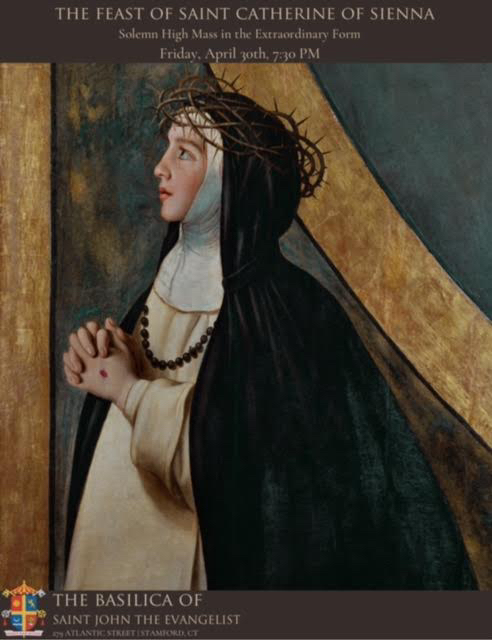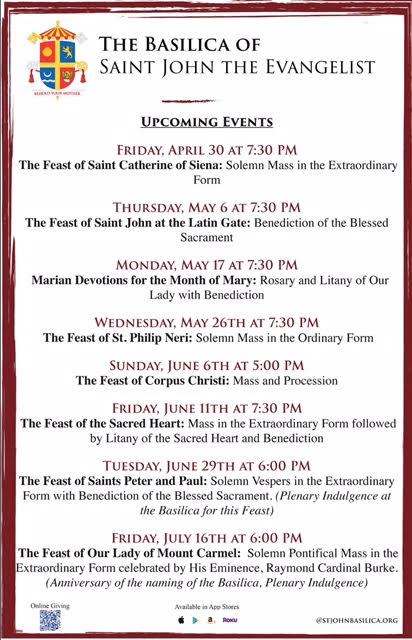The 12:30 pm Sunday Traditional Mass is continuing under the new rector at St. Patrick’s Church in Bridgeport, CT (the Cathedral Parish).
28
Apr
27
Apr
23
Apr
19
Apr
Marking the Hours
Posted by Stuart Chessman
(Above)Master of the Paris Bartholomeus Anglicus, Book of Hours Use of Paris, In Latin and French, Illuminated Manuscript on Vellum, Anjou or Le Mans, circa 1440s. CHRISTIE’S (Illustration: Artnews, 02/11/2021)
On April 23 you will get a chance to bid on a rare collection of manuscripts and early printed books at Christie’s, New York. I just had the pleasure of perusing this collection on a visit to Christie’s galleries. How precious to people of that age was the printed or written word! With what great care was it presented and preserved! The surprises are many – such as the first complete printed edition of Plato in any language (1484-85, in Latin translation). Most of this edition was printed by the Dominican nuns of San Jacobo di Ripoli, a Florentine convent!
But what probably will interest our readers most is the collection of books of hours – many magnificently illustrated. A book of hours was a medieval devotional book, which started as an abbreviation of the breviary but expanded to include much else beside. It was the most widely disseminated book of the later middle ages – in Latin but also in the vernacular. For the book of hours was not intended primarily for religious. Indeed, after the invention of printing, such volumes become acccessible to a fairly wide range of the population. Eamon Duffy has written an insightful and sympathetic account of late medieval prayer life, its origin, flourishing and end, based upon his study of books of hours and their annotations. (Marking the Hours: English People and their Prayers 1240-1570, Yale University Press, New York and London 2006)
It is amazing to walk past each of these beautifully displayed volumes, which admittedly represent a selection of the more luxurious books of hours. We are entranced by the jewel-like illuminations and the light flashing off the gilt pages. The book can be of incredibly small dimensions. The various liturgical “uses” represented show the diversity of the Roman rite at that time. Yet, as Duffy explains – somewhat contrary to a suggestion in the auction catologue – these books were not merely the status symbols of that time but afford us a glimpse into the private prayer life of the late medieval people.
You can review for yourself each volume in detail – or register to bid on the 23rd. Consult the Christie’s site:
(Estimates for the books of hours range from $30,000 to well over $1,000,000; the incunabula – books printed prior to 1501 – can be much more reasonable)
18
Apr
Since the start of 2021 overt attacks on Traditionalism have multiplied. Recall the entirely negative “Summary” of the French bishops’ reports on Summorum Pontificum, Bishop Robert Barron’s diatribe against “fierce” Traditionalists and most recently the attacks by Thomas Reese SJ suggesting that the use of the Traditional Mass be banned outright. What is noteworthy is that all these assaults were launched by prominent members of the Catholic administrative or media establishment. Furthermore, these critics of Catholic Traditionalism enjoy other significant connections. Thomas Reese’s contribution, for example was first published in Religious News Service (RNS) a secular platform for officially approved views to be disseminated by the mainstream media. And Reese made his remarks on the old mass in the context of other recommendations very much aligned with the objectives of the Synodal Path in Germany (such as female clergy).
Now some on the right chose to ignore these statements or questioned their legal significance. I think this is very short sighted. Catholic bishops and especially Jesuit priests hardly ever make statements out of a disinterested love of truth. These comments would never have been made if the authors had not been sure of an at least benevolent reception on the part of both their colleagues and in Rome. I might be missing something, but I don’t recall reading any statements in support of Summorum Pontificum or Traditionalism from similarly situated sources in the hierarchy or Catholic media.
Let’s look at these comments and try to synthesize them. In so doing I hope I am not being unfair: the liturgical ideas of Thomas Reese and those of Bishop Barron are not exactly the same. I do not intend to focus on the contradictions and preposterous assertions of the three “indictments ” – which are evident of the face of these documents. Rather, I would like to consider not so much what they authors are saying about Catholic Traditionalism but what they are saying about themselves. What do we learn about the features of the Catholic Church in 2021 from these various “position papers” ?
First, this Church is authoritarian. Bishop Barron is concerned about opposition to the Council and to the Pope. No attempt is made to make the case for either, or to convince opponents – the immunity of Council and Pope from criticism is presupposed. Similarly, the French bishops’ Summary takes the existing liturgical establishment in France as a given not needing any further defense or explication. Unquestioning loyalty to the existing “system” and to the ecclesiastical authorities is expected.
Second, in the understanding of especially Reese the liturgy is a created thing, an administrative product. It is something that can be altered or abolished at the will of the clergy. This understanding is in stark contrast to Joseph Ratzinger’s initial horror over the Novus Ordo introduction in 1969 which he saw as destroying the notion of the liturgy as something pre-existing for us, not created by us. Of course, Summorum Pontificum, reflecting these insights, defined the old liturgy as something that could not be abolished. Certainly the understanding of the Eastern Orthodox is very similar.
Third, unity is posited as an absolute value. The Summary of the French bishops obsessively emphasizes the danger of disunity: the horrors of different liturgical calendars, different liturgies, different ecclesial understandings etc. Bishop Barron sees himself as part of a great center set off against “beige Catholics” on the one hand and Traditionalists on the other.
Fourth, the Church of Reese, Barron and the French bishops’ Summary is lawless. Thomas Reese feels empowered by the Council to disregard not just Summorum Pontificum but also Ecclesia Dei and much other legislation authorizing the traditional rite. And what precedent is there for a rule excluding persons below a certain age from attending a rite of the Church? The French bishops’ Summary does the same: “The FSSP, by celebrating exclusively in the extraordinary form, poses a problem for diocesan life and this practice is contrary to the sense of the Motu Proprio.”(without citing any authority for this assertion) Do not these authors, however, have the best of authority in the practices of Pope Francis, who has systematically disregarded customs, canon law and liturgical rules from the beginning of his pontificate? Only in the last few months, for example, we have seen Francis impose restrictions on the celebration of the Mass, including the Traditional Mass, in Saint Peter’s in Rome, disregarding all procedural and substantive church law.
Fifth, Reese, Barron and the French bishops are contemptuous of those who may deviate from the “party line” and of their motivations. Reese: “The church needs to be clear that it wants the unreformed liturgy to disappear and will only allow it out of pastoral kindness to older people who do not understand the need for change.” The French ”Summary”: “For many of the faithful worshipping in the extraordinary form the Christian life consists of Sunday attendance without any other spiritual or theological formation. We are far from the Pope Francis’ conception of a missionary disciple.” Barron: “These arch-traditionalist Catholics have become nostalgic for the Church of the pre-conciliar period.” There is no possibility of dialogue here. No attempt is made to actually “engage” with these problematic Traditionalists to understand what they’re thinking, let alone reach an accommodation with them. The pre-SP indults were promulgated based on the alleged concern of the Church for those “attached to” the Traditional Mass – such considerations doesn’t seem to play a role anymore.
None of this is new. The understanding of the liturgy (and its artistic and cultural appurtenances) as an arbitrary clerical creation, the authoritarianism, the brusque disregard of legal formalities and of the rights of all those holding other views, the goal of a quasi-totalitarian unity, the aggressive and hostile attitude towards conservative ”dissidents”- have dominated from the very beginning of the Conciliar era. To illustrate, I recall that at Georgetown University around 1973 the Jesuit liturgists were insisting on a radical reconstruction of the university chapel – which they of course eventually achieved. But initially, substantial opposition was led, I recall, by a member of the arts faculty. The Jesuit leading the charge for “reform” informed those assembled at a “town meeting” that, after all, he didn’t care how many opposed his plans or why – it was the liturgical thing to do and he would force it through. Need I mention that it was an aesthetic disaster and that it all had to redone within a few years?
Our authors’ contributions reveal to us a Church that is fossilized. The same clichés are repeated over and over just as they were in the 1960s: that Traditionalists are old nostalgic people (Reese); that the establishment stands in the center between extremes (Barron); that we need more and more Eucharistic prayers (Reese again) (In the 1970’s didn’t the Catholic chaplaincy at Cornell University offer a book with 50 or so (unauthorized) canons?) Obviously the “Council” means a set of assumptions and rules – an ideology – that has become fixed and unchangeable.
Martin Mosebach, in an interview in 2019, enraged the “German Church” when he compared the public appearances of Pope Francis with those of Stalin or Hitler. Yet recently I’ve been reading that the late Hans Küng seems to have repeatedly compared the Catholic Church with the Soviet Union. I think Küng was far more prescient then he ever realized. Because the Church establishment – in its fanatical, uncompromising insistence on immutable positions which can never be controverted by any appeal to the facts – is entirely in line with the modus operandi of the Soviet party bureaucracy in its last decades.
What will be the result of these efforts against Traditionalism? I do not know! Pope Francis, of course, could very well impose restrictions of some kind on the celebration of the Traditional Mass and thereby score some easy points with the Church establishment – especially the European hierarchies and the major religious orders everywhere. It would, however, seem odd for the Pope to move on this front eight years into his pontificate – especially with Pope Benedict still alive. And given the developments in Traditionalism since the promulgation of Summorum Pontificum, I do not know how many Traditionalists would follow him at this stage. And, after all, there is a minority tendency among progressives that tolerates the Traditional Mass (think of Bernardin!).
Moreover, I think our enemies are talking from a position of weakness, not strength. Pope Francis recently has been forced to adopt an ambiguous position on several issues – married priests, women deacons, “synodality” – because of the German Synodal Path (which he himself, of course, helped to launch) and opposition, both overt and behind the scenes, elsewhere in the Church. Those who would wish to restrict or even outlaw the Traditional Mass may see this as their last chance in this pontificate before Francis dies or some new destabilizing scandal in the Church or the Vatican erupts. And, before the ever-accelerating decline of Mass attendance, vocations and monetary support by the laity reaches catastrophic proportions. The rediscovered rage against Traditionalists may be only the establishment’s last gasp of despair.
16
Apr
Luxury Condo – in a Church!
Posted by Stuart Chessman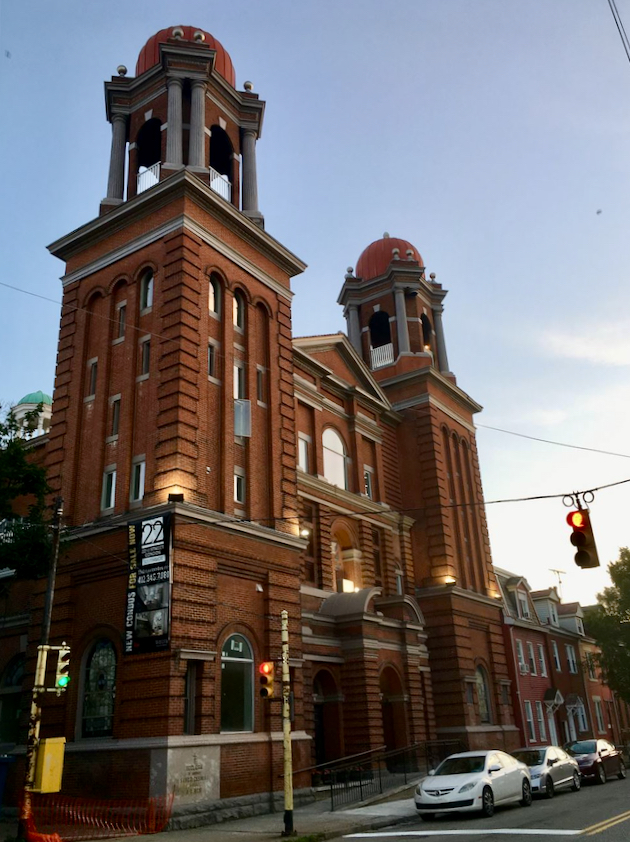
Church-turned-Condo is Heaven on Earth.
$700,000 purchase price including bell tower, two bedrooms, 2 1/2 bathrooms.
The 22nd Street Condos, in Pittsburgh’s historic South Side neighborhood, were built inside a former church that was erected in 1902 as the home of the Catholic Lithuanian St. Casimir parish 1)
The condo is built into the choir loft of the church. St. Casimir’s was the first parish for Lithuanians in Pittsburgh. It was closed in 1992 by (now) Cardinal Wuerl in the first round of parish reductions for Pittsburgh. The interior pews, organ and other artifacts were moved to Holy Trinity Church in Pilviskiai, Lithuania. 2) It was a part of a process of decline that has continued to the present day. As an aside, Arcadi Nebolsine, for whom we have written an obituary on this blog, was involved at some point in the fight for preserving Pittsburgh’s Catholic ethnic parishes – it may have even been before Donald Wuerl’s tenure at that diocese. It was one of the first of his many campaigns to preserve historic art and monuments – even though Nebolsine was not a Roman Catholic!
The conversion of the church to the present luxury condominium complex took place in 2017-2019:
How did a closed church become a luxury living space? Developer Ivor Hill describes stumbling upon the old building one night when leaving guitar class. Someone had attempted a conversion, and the building contained two apartments and a yoga studio. It was listed for sale for only $600,000. Shortly before closing, Mr Hill sat on the former altar and began sketching out his plans….1)
- St-Esprit, Meg, Church-turned-Condo is Heaven on Earth, The Wall Street Journal at M1 (April 16, 2021)
- Global True Lithuania: Pittsburgh, Pennsylvania
15
Apr
To provide some context…
Posted by Stuart ChessmanDevelopments in the Church do not happen in isolation – they unfold in a specific historical, political and economic situation. To understand what is going on we always need to look at the context. Certainly the last year has been one of social turmoil and upheaval – much of it at the direction of the controlling “civil society” of the United States and Western Europe. Today, we read the following in The Wall Street Journal:
Bank Earnings Soar to Record Highs
Goldman posted records in quarterly revenue and profit, while JPMorgan notched its highest quarterly profit on record. Wells Fargo enjoyed its best-ever quarterly profit in corporate and investment banking.
As John Dos Passos wrote:
(Wars and panics on the stock exchange,
machinegunfire and arson,
bankrupticies, warloans,
starvation, lice, cholera and typhus:
good growing weather for the House of Morgan.)
Dos Passos, John, 1919 ( U.S.A. trilogy) at 648 ( Library of America edition, 1996, New York; originally published 1932)
13
Apr
Baroque in Kentucky
Posted by Stuart Chessman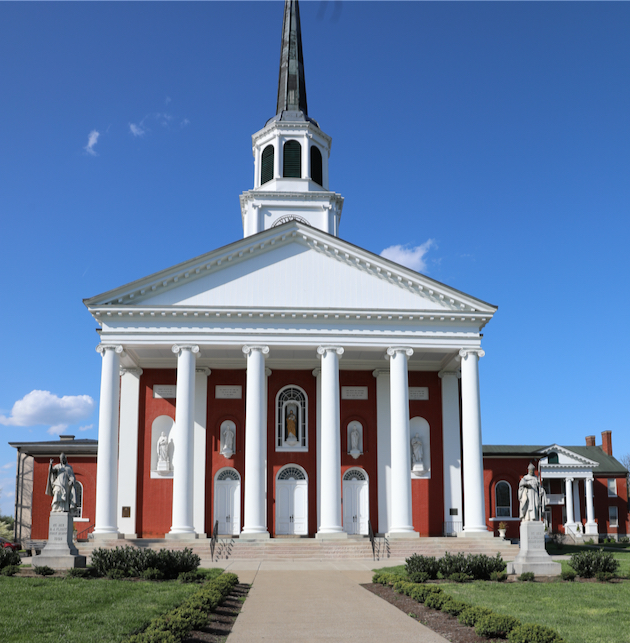
New York, Boston, Philadelphia and … Bardstown? Furthermore, what could be the connection between this not-very-well-known Kentucky town and Naples, Italy? And what are its remote links not just with one, but two Catholic chivalric orders?
Bardstown, KY today is a quaint town – population 13,000 – with numerous buildings from the 1770’s onwards. It resembles Litchfield or Farmington, CT, Deerfield or Salem, MA – all localities once important in preindustrial America but subsequently bypassed by economic progress and therefore fortunately preserved. Bardstown, however, has unique Catholic significance. For it was to this region that Catholic settlers came to establish a new community west of the Alleghenies. These first Catholics, moreover, were in large part descendants of the original English Catholic population of Maryland. 1)
It was perhaps in recognition of these connections with Maryland that Bardstown became – along with three other cities even then much more prominent – one of the first four new dioceses of the United States, carved in 1808 out of the original diocese of Baltimore. And this status was probably also thanks to the efforts of its indomitable first bishop, Mgr. Benedict Joseph Flaget of France. The diocesan territory was unimaginably vast. Yet already between 1816 and 1823 Bishop Flaget built a new cathedral. It seems that both Catholics and Protestants contributed to its construction. St. Joseph’s stands, essentially unchanged, to this very day.
Now this cathedral was designed by an American architect (John Rogers) in a quintessentially American style, very much like contemporary Protestant churches and secular buildings. It features “Catholic” statues on its façade and “Protestant” inscriptions of the Ten Commandments on the exterior walls of the nave.

The columned façade is most impressive. We note there a plaque dedicated by the “Order of the Alhambra,” a kind of Catholic Shriners (they sport a white fez). Inside, the white columned interior is severe but festive. We read that the columns were originally great trees from the immediate vicinity cut down for this church. Photographs show us that up to the 1950’s the sanctuary was a pretty neo-Gothic affair undoubtedly dating to Victorian times. What is present there now, unfortunately, is a typical post-Conciliar “renovation.”
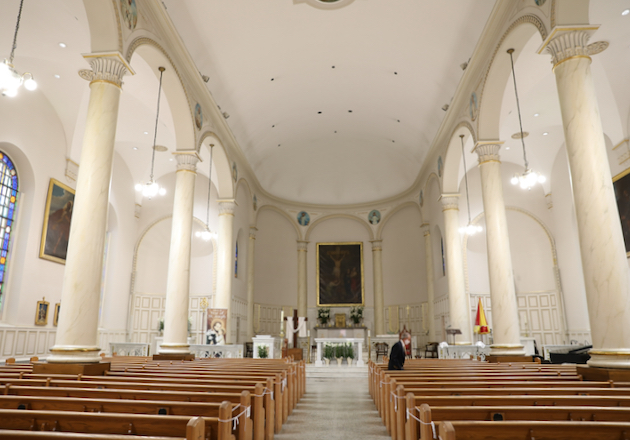
Around New York City, starting circa 1939, proto-Conciliar Catholics waxed enthusiastic about using imitations of the “enlightened” style of the American “meetinghouse” for Catholic churches (like Corpus Christi or, later, the Elizabeth Seton shrine). In Bardstown, before 1820, Catholics were already building their churches in a bright neoclassical idiom – but as part of the original architectural movement!
But here the resemblance with the 20th century “Americanist” architecture ceases. Because Bishop Flaget by no means wanted just an austere, unadorned interior but sought to embellish it in a Catholic manner despite the limited resources at his disposal. And the main element of decoration would be framed paintings. A Belgian priest, working for the diocese, acquired a number of artworks in Europe. But outside assistance would also be necessary – and many more items indeed came as gifts. For at that time the “American Catholic Church” was still dependant on the aid of Catholics – especially the reigning princes and their officials – of Europe and Latin America.
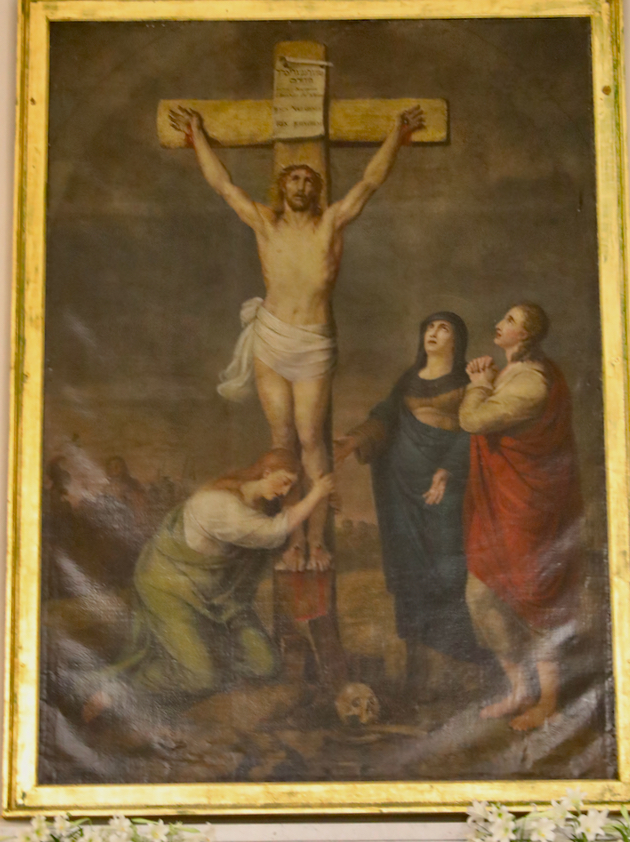
The pope himself contributed a number of paintings. The exact role of the future king Louis Philippe of France in providing support to Bardstown cathedral is disputed. But there seems to be a record of a gift from him of vestments, furnishings for the sanctuary, sacramental vessels and paintings from around 1823. The then Duke of Orleans had become acquainted with bishop Flaget during the time both were exiles from revolutionary France. The wife of Louis Philippe was a princess of the Neapolitan Bourbons. And a major donation of paintings from Francis I, king of the two Sicilies, (reigned 1825-1830) is obvious – numerous gold frames around the church record a dedication from him. The Sacred Military Constantinian Order of Saint George – so visibly active in the Traditionalist cause around New York – should be overjoyed. For the Bourbon kings of Sicily were the heads and patrons of that order.

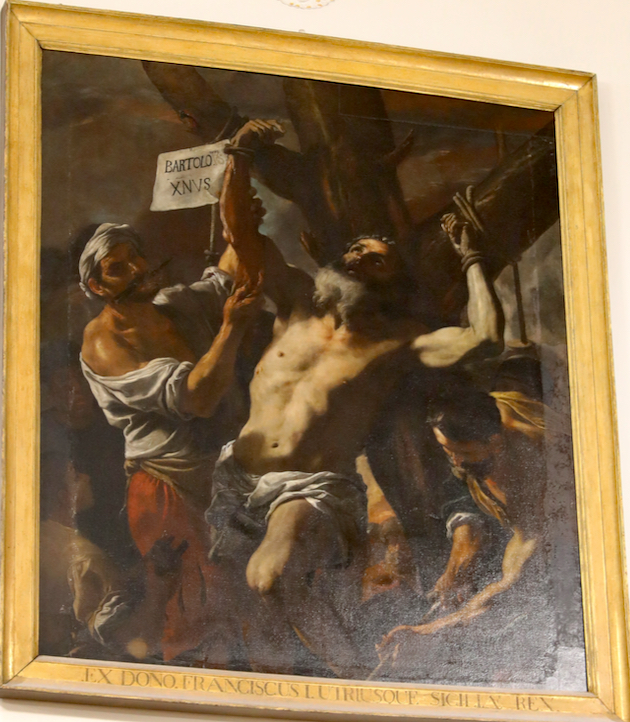
Much of this early donated art remains on display high on the walls of the cathedral. Regrettably, the paintings are indifferently lit and seem to be in need of restoration – so it is, in general, hard to form a judgment of their artistic merit. Subject to further research, for example, I am not sure that the cathedral’s claim to possess works by “van Dyke, Rubens and van Eyck” is sustainable. The attribution of one dramatic and powerful painting is, however, secure: a Martyrdom of St. Bartholomew by Mattia Preti (1613-1699) – one of the gifts of King Francis I. Preti continued the style of Caravaggio to the end of the 17th century. He joined the Order of St. John – the knights of Malta – and worked for many years on the island of Malta itself. What a contrast between this dark, dramatic work and the surrounding neoclassical serenity of this church’s interior! This painting was restored carefully by the J. Paul Getty Museum in 2002 and is in fine condition.
Bardstown’s ecclesiastical glory was short-lived. In 1841 Bishop Flaget moved his cathedral to the upcoming city of Louisville, taking with him some of the paintings. And Louisville itself was even then being far surpassed by other more recently founded Catholic dioceses west of the Alleghenies: Cincinnati, St. Louis, Chicago and many more. St. Joseph’s of Bardstown become an ordinary parish church. It briefly came to national attention again in the 1950’s when some of the paintings were stolen and quickly recovered. Nowadays Bardstown is known, if at all, mainly to those touring the many local bourbon distilleries. But the church of St. Joseph of Bardstown still stands as a remarkable, relatively intact monument to the earliest days of Catholicism in the United States and to the distinguished artistic taste of that far-off time.
- Also near Bardstown is the famous Trappist abbey of Gethsemani.
13
Apr
This Thursday Fr. Perricone will be conducting his monthly Catechism class at St. Josephat’s lower church hall starting at 6pm. The class is open to all.

4
Apr


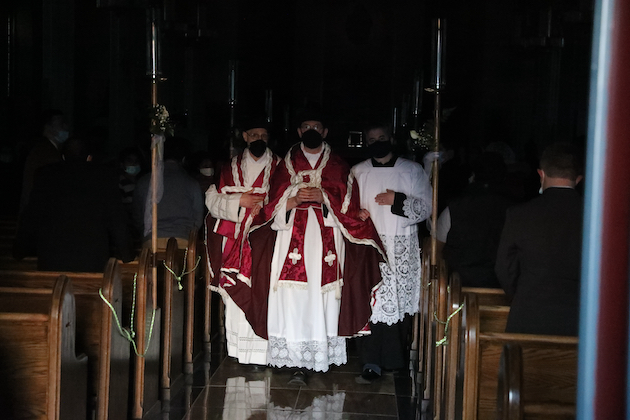
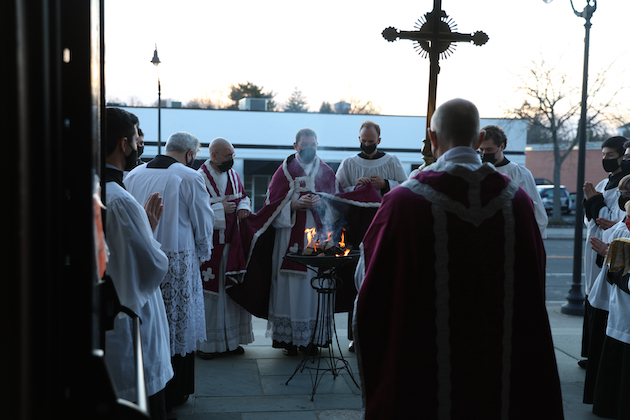

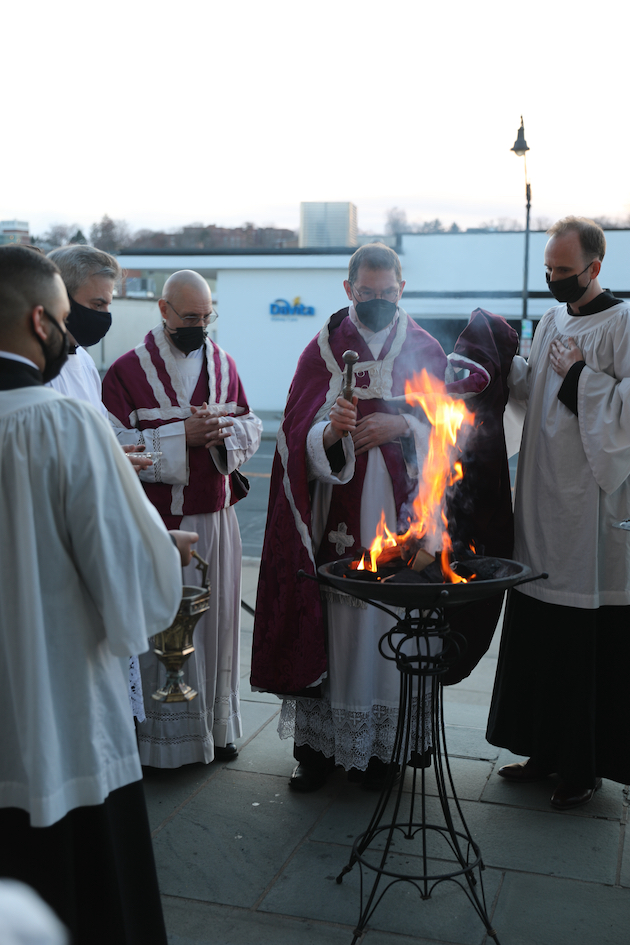
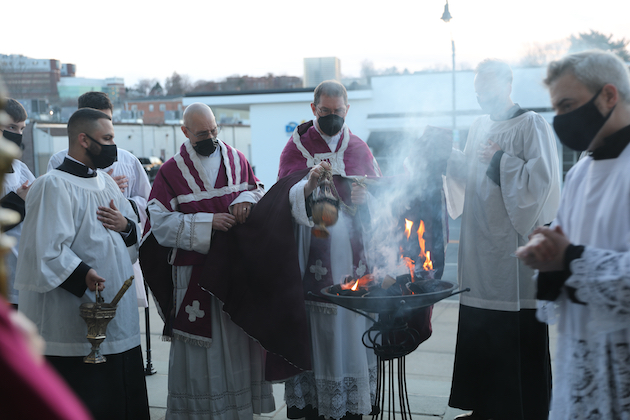


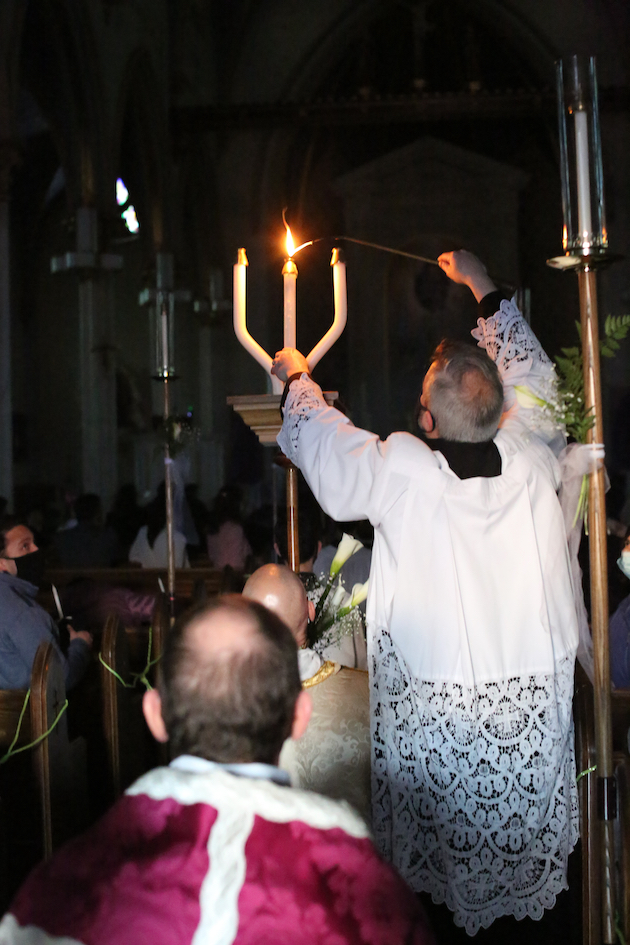

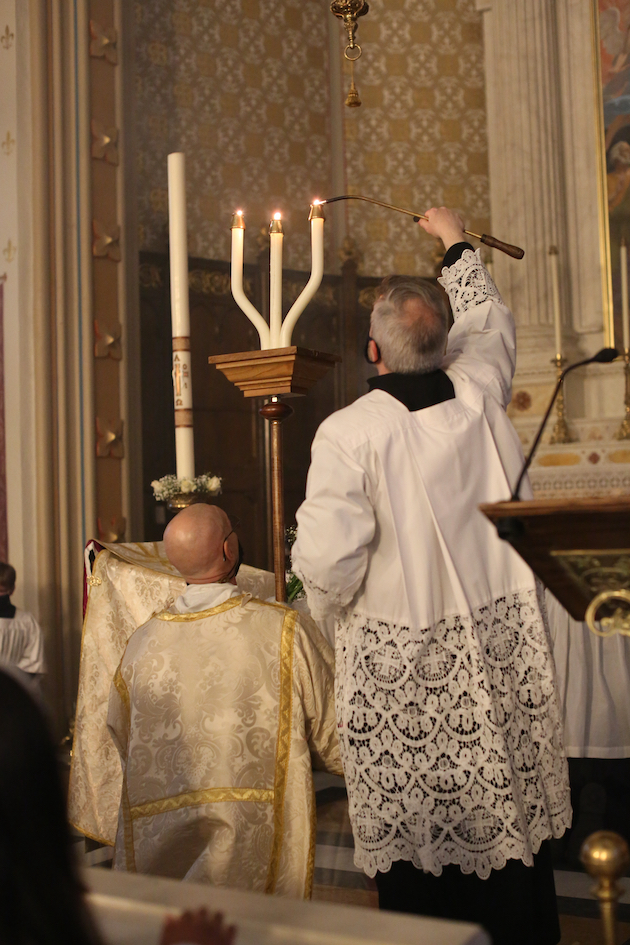
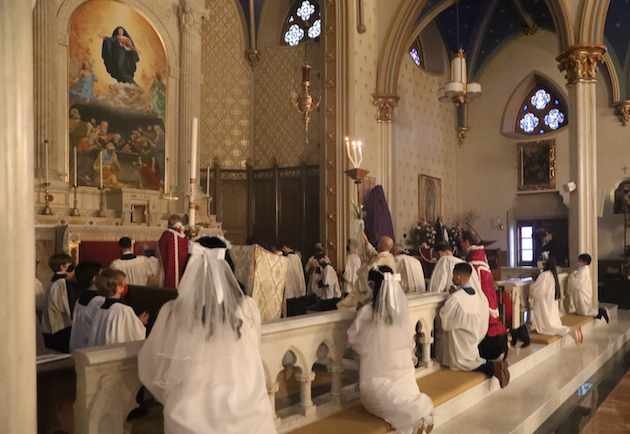

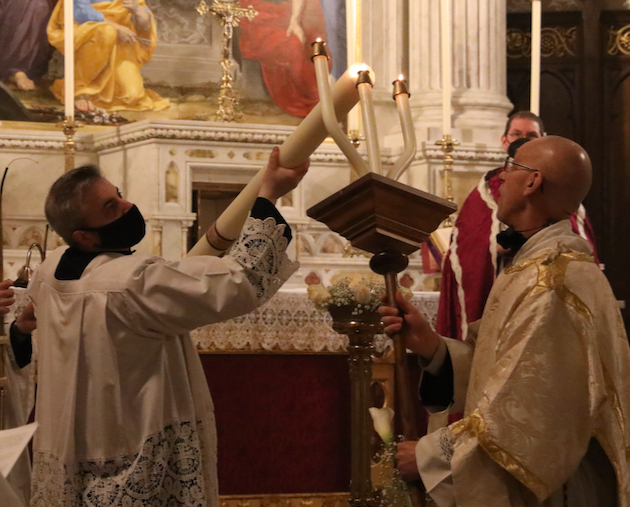


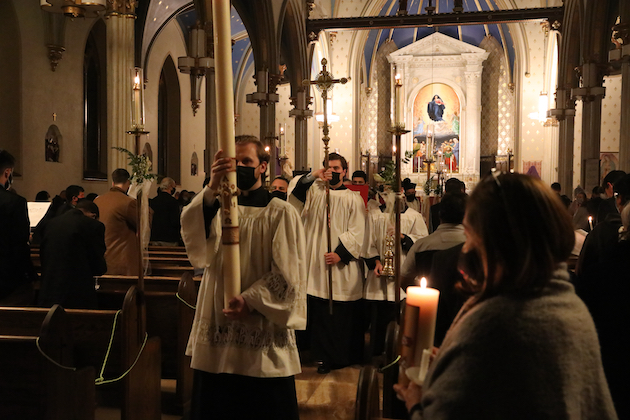

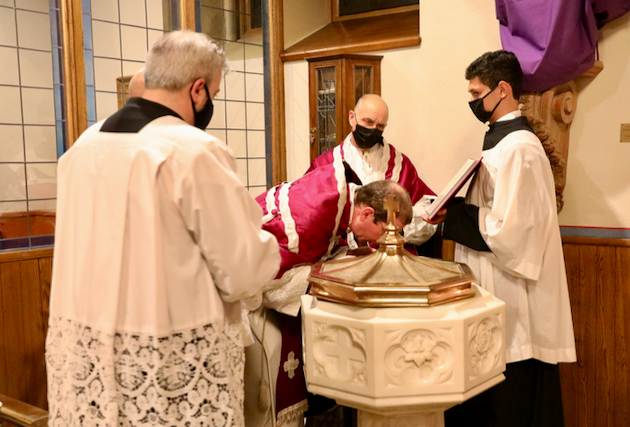
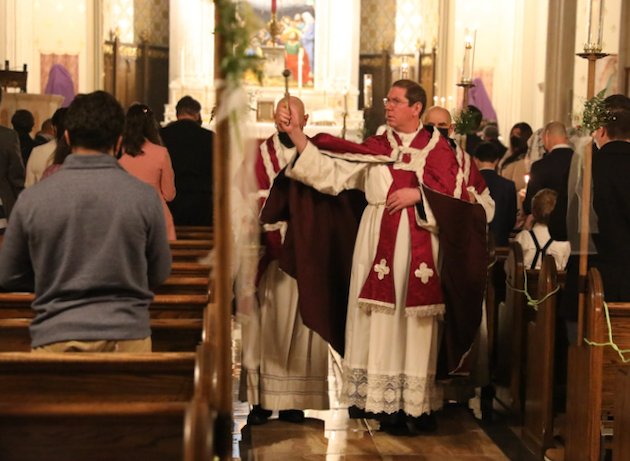
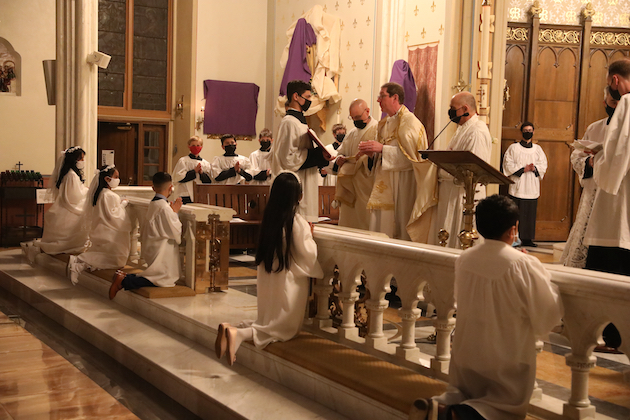
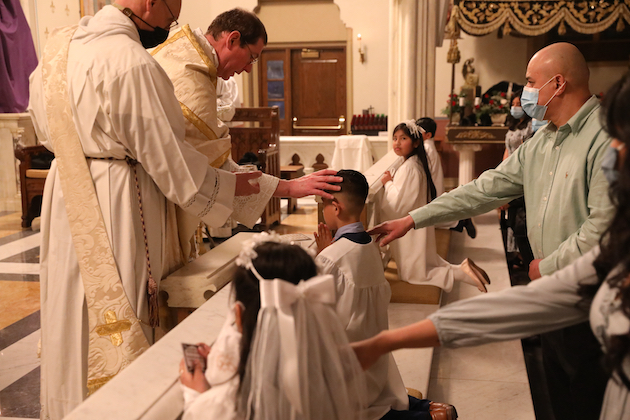

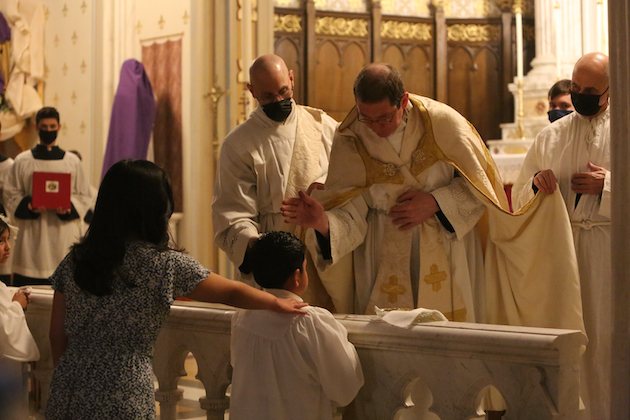
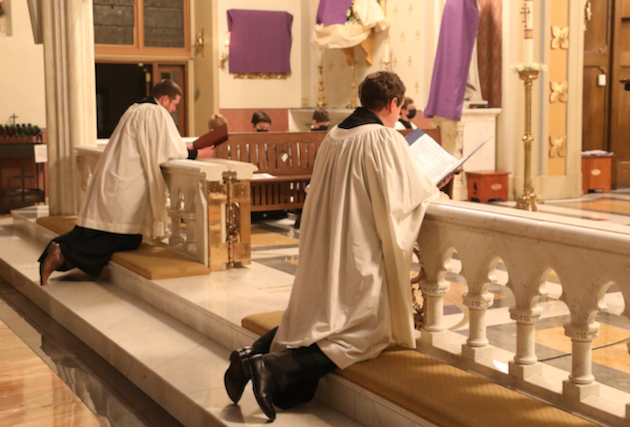




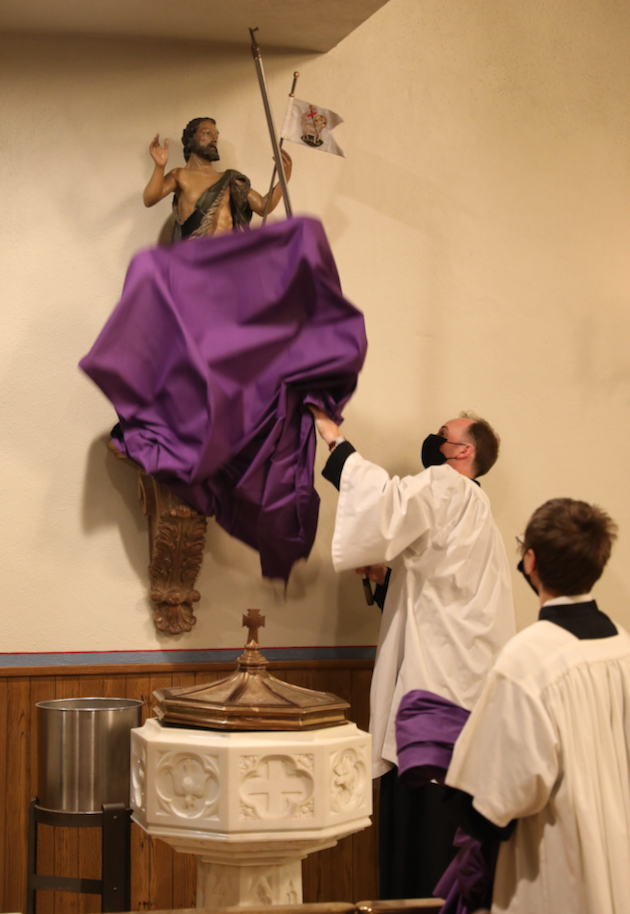
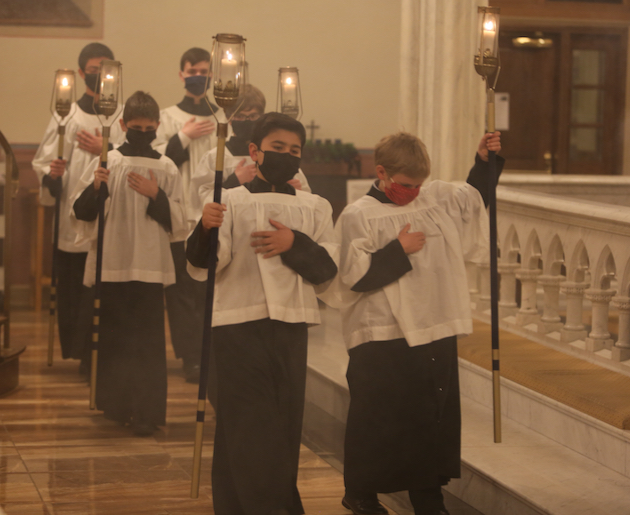
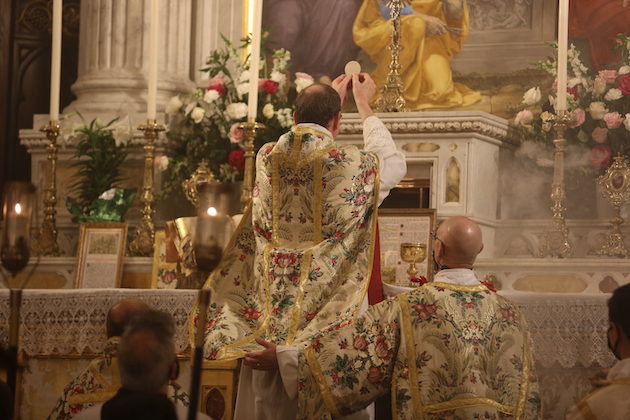
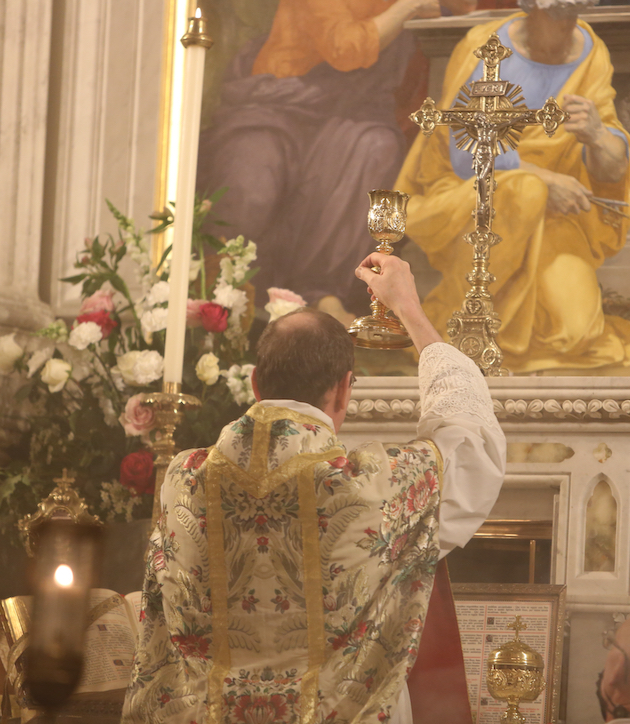
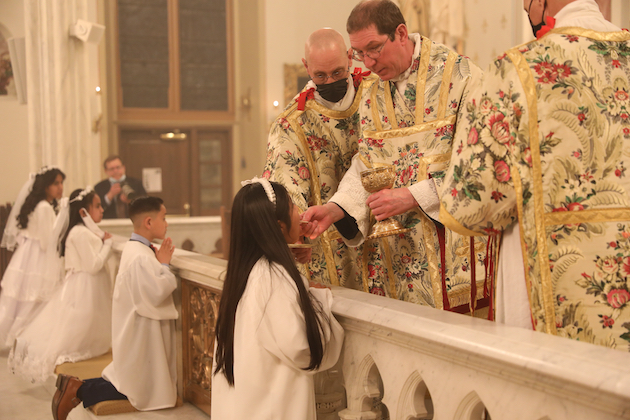
Contact us
Register
- Registration is easy: send an e-mail to contact@sthughofcluny.org.
In addition to your e-mail address, you
may include your mailing addresss
and telephone number. We will add you
to the Society's contact list.
Search
Categories
- 2011 Conference on Summorum Pontifcum (5)
- Book Reviews (95)
- Catholic Traditionalism in the United States (24)
- Chartres pIlgrimage (17)
- Essays (176)
- Events (670)
- Film Review (7)
- Making all Things New (44)
- Martin Mosebach (34)
- Masses (1,343)
- Mr. Screwtape (46)
- Obituaries (15)
- On the Trail of the Holy Roman Empire (22)
- Photos (347)
- Pilgrimage Summorum Pontificum 2021 (7)
- Pilgrimage Summorum Pontificum 2022 (6)
- Pilgrimage Summorum Pontificum 2023 (4)
- Sermons (79)
- St. Mary's Holy Week 2019 (10)
- St. Mary's Holy Week 2022 (7)
- St. Mary's Holy Week 2023 (7)
- St. Mary's Holy Week 2024 (6)
- Summorum Pontificum Pilgrimage 2024 (2)
- Summorum Pontificum Pilgrimage 2025 (7)
- The Churches of New York (198)
- Traditionis Custodes (49)
- Uncategorized (1,373)
- Website Highlights (15)
Churches of New York
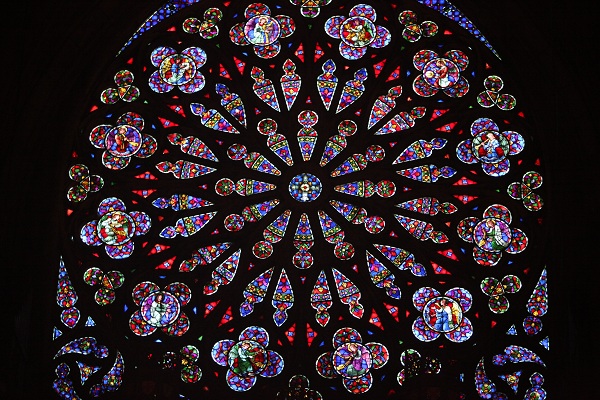
Holy Roman Empire

Website Highlights
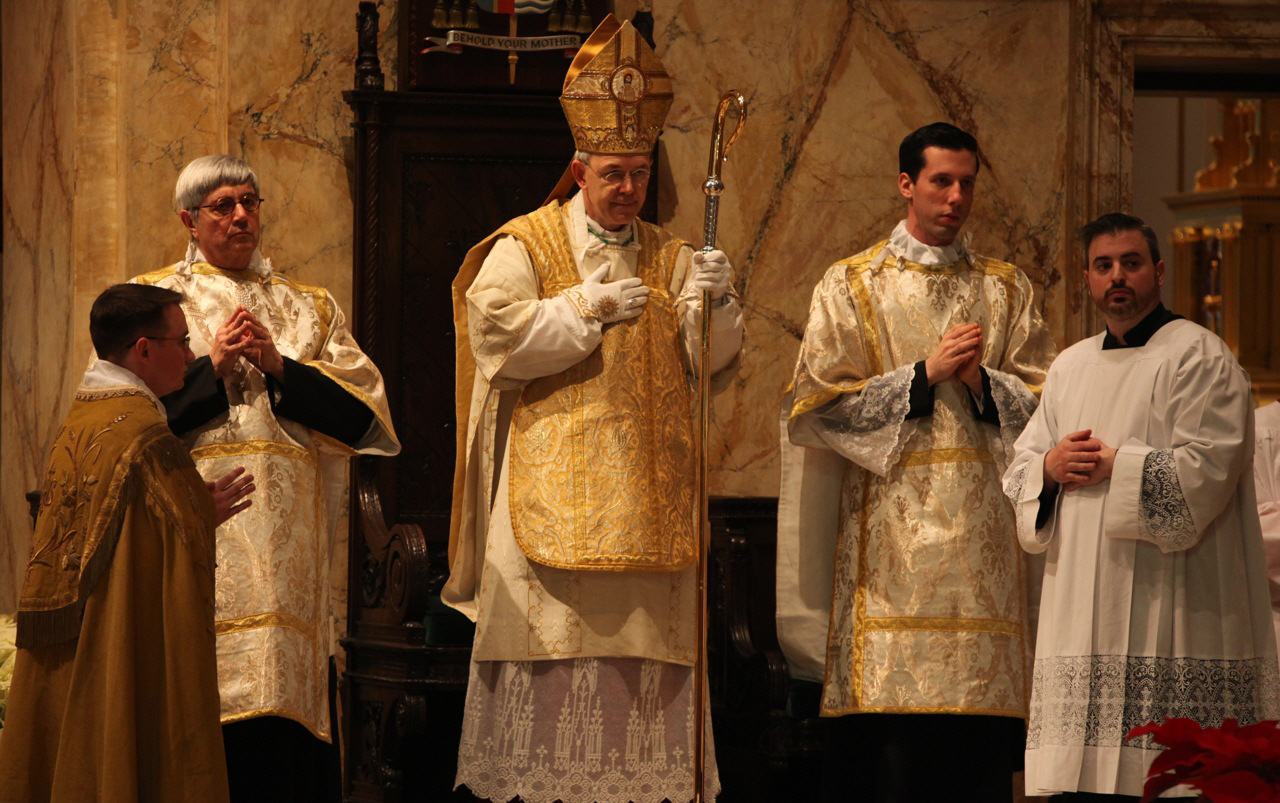
Archives

[powr-hit-counter label="2775648"]
